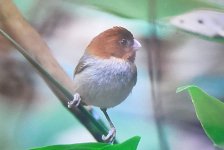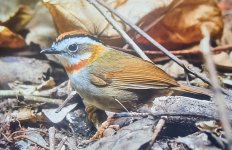Pics attached - Red-whiskered Bulbul (in a cage outside a coffee shop as we headed towards southern Thailand) and a "hide" overlooking a bathing pool at Phu Suan Sai National Park, Thailand. Photographers sit for hours in pretty challenging conditions for a 2 minute show of the star species hopefully every afternoon in a four hour session. Also sadly a couple of attachments from papers/articles on the cagebird trade in Asia. As you travel, you become conscious of distributions of birds like White-rumped Shama and Red-whiskered Bulbul affected by areas where trapping is still prevalent. Such birds are even trapped out of feeding sites and the owners of such sites and blinds see some species disappearing.
Any way. I cannot even conceive really the effort made to see 10,000 pictures whether birds are tape lured, fed, habituated or not.
All the best
Paul











